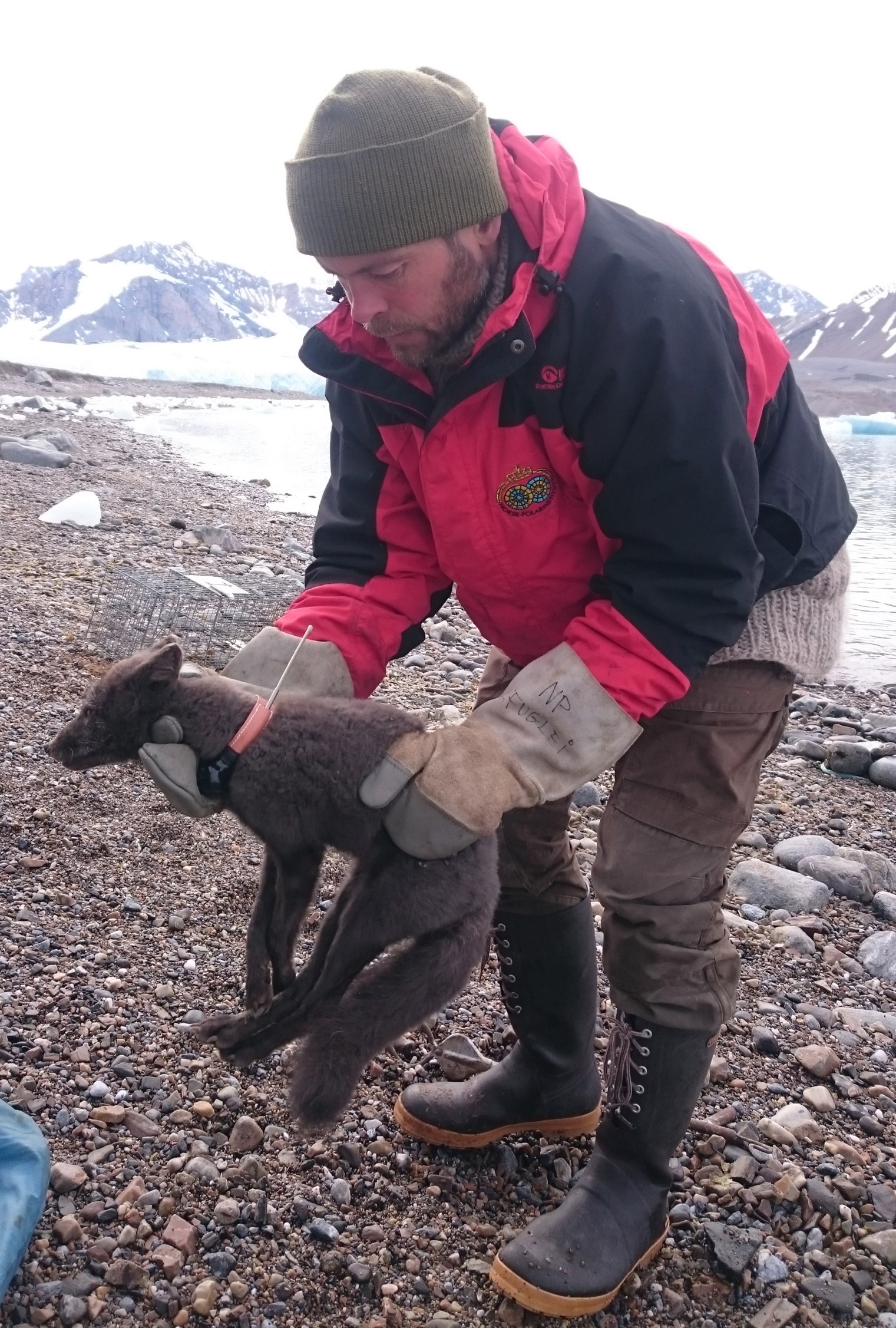Dispersal movement of a COAT-instrumented Arctic fox went viral
Published on: 2. August 2019
Climate change is expected to impact area use and dispersal movements in Arctic animals, and this is best documented by means of satellite-transmitters. Such instruments equipped on species like reindeer and Arctic fox constitute therefore a component of COAT infrastructure, which are financed by the Research Council of Norway and Tromsø Research Foundation. The retreat of sea ice around Svalbard is, for instance, expected to affect the population of the Arctic fox. This is because the foxes use the sea ice both for foraging and for dispersal from and to Svalbard.
Until now 54 foxes have been followed year round by means of satellite telemetry. In winter 2018, one of these foxes embarked on a spectacularly long and fast dispersal movement that took it to Ellesmere Island in Canada. An article in Polar Research, in which Eva Fuglei and Arnaud Tarroux described this dispersal movement, sparked media headlines that went viral. As a result, the article in Polar Research has so far been downloaded 5891 times, and various media from all continents have interviewed Eva and Arnaud. (likns to some of the articles below the image)

The Arctic fox that dispersed from Svalbard/Europe to Ellesmere Island/North America. The fox is here released by Tommy Sandal Tommy is in charge of the capturing and instrumentation of the COAT-foxes in Svalbard. Photo: Elise Strømseng
Here are a little selection of the international media coverage this article lead to:
- FOX MAKES 3,500-KILOMETRE TREK FROM NORWAY TO CANADA. Barrie 360, 03.07.2019 (English)
- Fuchs wandert in 76 Tagen von Norwegen nach Kanada. Spiegel Online, 03.07.2019 (German)
- L’incroyable périple d’une renarde arctique intrigue la science. I'éditon du Soir, 03.07.2019 (French)
- Arctic fox treks 3,500 km from Norway to Canada in 76 days. The Weather Network, 02.07.2019 (English)
- Fantastic arctic fox: animal walks 3,500km from Norway to Canada. The Guardian 02.07.2019 (English)
- An Arctic Fox’s Epic Journey: Norway to Canada in 76 Days. The New York Times, 02.07.2019 (English)
- Polarræv i forbløffende bedrift: - Troede det var løgn. Ekstra Bladet, 02.07.2019 (Danish)
- An arctic fox walked 2,700 miles from Norway to Canada. Yes, that’s possible. The Washington Post, 02.07.2019 (English)
- Tutkijat hämmästyivät: napakettu kipitti 3 500 kilometriä Norjasta Kanadaan ennätysvauhdilla. YLE, 02.07.2019 (Finnish)
- ”Maailman nopein naali” jolkotteli yli 3 500 kilometriä Huippuvuorilta Kanadaan. Helsingin Sanomat, 02.07.2019 (Finnish)
- Scientists 'speechless' at Arctic fox's epic trek. BBC News, 01.07.2019 (English)
- Fjellrev vandret fra Svalbard til Canada på 76 dager. High North News, 27.06.2019 (English)
More COAT media coverage on this and other topics (mostly in norwegian) you find in "COAT i media".